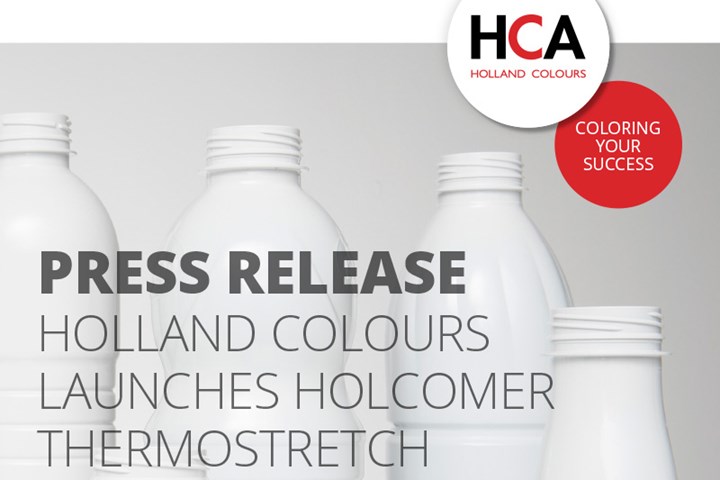UV Stabilizer for High-Speed PET Dairy Bottle Production
Holland Colours’ new Holcomer Thermostretch said to address how to accelerate PET production while maintaining a high level of light barrier protection.
A recently launched proprietary UV stabilizer additive from Holland Colours, Richmond, Ind., reportedly addresses the issue of how to increase production speed of PET bottles while maintaining a high level of light barrier protection. According to the company, creating an effective UV barrier (blocking 99% or more) involves adding a high dose of light barrier concentrate to the PET resin. With traditional additives, one side effect of this has been a limit in the preform’s ability to quickly absorb the heat energy that is needed to blow the bottle. The solution that has been used so far is to ease back on the production speed to compensate.

The new Holcomer Thermostretch UV stabilizer is said to deliver significantly higher opacity and much improved heat absorbance at a dosing level 40% less than that of traditional alternatives, according to Hans Werink, global product manager dairy applications. “By means of these beneficial properties the production speed restrictions are lifted to levels that are close to blowing un-colored preforms. Holcomer Thermostretch also meets new regulations that limit the use of inorganic pigments and so improves recyclability.” The result reportedly is an increase in blowing output of up to 25% and a scrap rate at the same level as seen with uncolored preforms. All for the same capital investment, energy requirements and operational cost.
The benefits do not end there, according to the company. When preform and bottle design and preform wall thickness become less of a limiting factor, producers can choose from a broader range of existing preform and bottle molds rather than having to make substantial investments in adaptations or new ones. This also provides very significant cost savings. The lower scrap rate also translates into direct savings, and the much broader processing window supports shorter start-up times, which reduces opportunity cost. The much lower dosing level also reduces mold abrasion, as a result extending maintenance intervals.
Related Content
-
Prices of All Five Commodity Plastics On the Way Up
Despite earlier anticipated rollover in prices for most of the volume commodity resins, prices were generally on the way up for all going into the third month of first quarter.
-
Prices for PE, PS, PVC, PET Trending Flat; PP to Drop
Despite price increase nominations going into second quarter, it appeared there was potential for generally flat pricing with the exception of a major downward correction for PP.
-
Prices for All Volume Resins Head Down at End of 2023
Flat-to-downward trajectory for at least this month.


